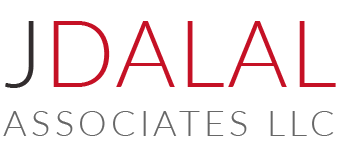Are you still relevant – in these changing times?
These are changing times, driven by technology, human demographics and business dynamics. Businesses built and thrived on platforms are no longer relevant. This presentation explores these changes and how it is changing various professions and industries and what businesses have to do to be able to keep up with the changes. Otherwise, they will join the ranks of companies that no longer exist (only 10% of Fortune 500 companies from 1955 exist today).
Two presentation format:
- Keynote speech (45-60 minutes including Q&A)
- Panel discussion (15 minutes of introductory remark followed by panel discussion on success/challenge stories)
The Future is changing – How do you manage change and remain relevant?
All those dire predictions about the automated economy sound like a sci-fi horror film from the ’50s: Robots are replacing human efforts. New technology based initiatives such as robotic process automation, cognitive learning are changing how businesses operate. Transaction based business models are replacing time based models. Skills necessary to be working in the new technology environment are not abundant. Business economics and models are already changing to reflect that. The pandemic also has altered how the business is conducted. Managing organizational and individual change is important in this environment and will need new skills and tools to effectively manage change and remain relevant.
Two presentation formats:
- Keynote speech (45-60 minutes including Q&A)
- Panel discussion (15 minutes of introductory remark followed by panel discussion on success/challenge stories)
Creating a culture of innovation – “Renew, revise or die”
Creating a culture for innovation isn’t about having an idea or engaging a few people to think differently. As the world is rapidly changing around everyone, innovation is not meant only for large organizations or those engaged in leading edge products and services. A culture where every person is engaged in thinking about creating higher value from their contribution, contributes to innovation. Creating such a culture is a longer term commitment but an important one for all businesses. This presentation touches on what does “innovation” mean in context of everyone’s job and how to create a culture of innovation for entities large and small.
Presentation format:
- Keynote presentation (45-60 minutes including Q&A)
Building and leading a high performing team
We have always looked with awe at the team that put the man on the moon or the Manhattan project that helped shorten the world war or the dominating Rugby team of New Zealand and wonder how they created such a high performing team. To transform a business requires a team that is on the same agenda with high level of achievement targets. It is even more essential for knowledge-centric businesses like financial planning, legal or insurance advice where the performance of the entire business depends on the achievement of each person on the team. This presentation will discuss the characteristics of a high performing team as well as tools and techniques for creating one. Case studies will highlight each of these factors.
Two presentation formats:
- Keynote speech (45-60 minutes including Q&A)
- Panel discussion (15 minutes of introductory remark followed by panel discussion on success/challenge stories)
Knowledge Management – Leveraging what you know
In this age of ample information, it is becoming more and more difficult for businesses to harvest the knowledge hidden in the information. Businesses also struggle to capture the knowledge their workforce and experience has generated in order to create the valuable asset and protect against loss thereof. Realizing, capturing, categorizing and utilizing this wealth of information is what knowledge management all about. This presentation discusses aspects of knowledge management and how to tackle this thorny issue. Technology is providing numerous tools and approaches to tackle this issue; however businesses have to learn and implement this practice. It is not as easy as many think!
Presentation format:
- Keynote presentation (45-60 minutes including Q&A)
Impact Sourcing – making a difference
We, in the United States, are facing several challenges. The pandemic is disrupting businesses, and as a result, we are seeing a never before experienced unemployment. We are also seeing social unrest driven by a lack of opportunity and an imbalance of opportunity with availability. However, this imbalance of opportunities is not just a recent event. There are multiple pockets of the U.S. where the unemployment is as high as 35% and under-employment is also prevalent. It is creating an imbalanced society. Impact sourcing encourages businesses to select their service provider based on its commitment to impacting a level of society that needs uplifting. Services are still provided at an economically advantageous rate and therefore, it is not a charity to promote social equalization.
Two presentation formats:
- Keynote speech (45-60 minutes including Q&A)
- Panel discussion (15 minutes of introductory remark followed by panel discussion on implementation of impact sourcing)
Leveraging Diversity for Success – And just don’t make it a slogan
Diversity, in this context, is much broader than recognizing color, sex, or national origin. In order to leverage the benefits of diversity, one must look at all of the dimensions that make people unique: ethnicity, gender identity, upbringing, physical attributes, values, political beliefs, personal attributes, cultural background as well as religious beliefs. It is also not just about recognizing this diversity but creating opportunities to leverage those strengths. A business will succeed and innovate when they learn to leverage the diversity present in their workforce. Managing cultural diversity is also a foundation for building a team and is critical when organizations come together in an outsourced relationship. This presentation deals with learning about cultural diversity, creating a process for it, and leveraging it in an organization.
Two presentation formats:
- Keynote speech (1 hour including Q&A)
- Panel discussion (15 minute introductory speech, followed by a panel discussion)
Managing with Measurements – “In God I trust, others provide data”
Managing effort is not an “art”. It requires solid foundation built on measurements and use of metrics in decision making. Automation effectiveness is built on selecting and managing “correct” metrics. Experience has shown that metrics are often not selected with the end result in mind. As a result, process cannot be trusted to deliver expected results; affecting delivery of product and services to customers. This presentation discusses various aspects of metrics – what are they, how to select and use them effectively.
Two presentation formats:
- Keynote presentation (45-60 minutes including Q&A)
- Half day workshop with hands-on exercises and case studies








